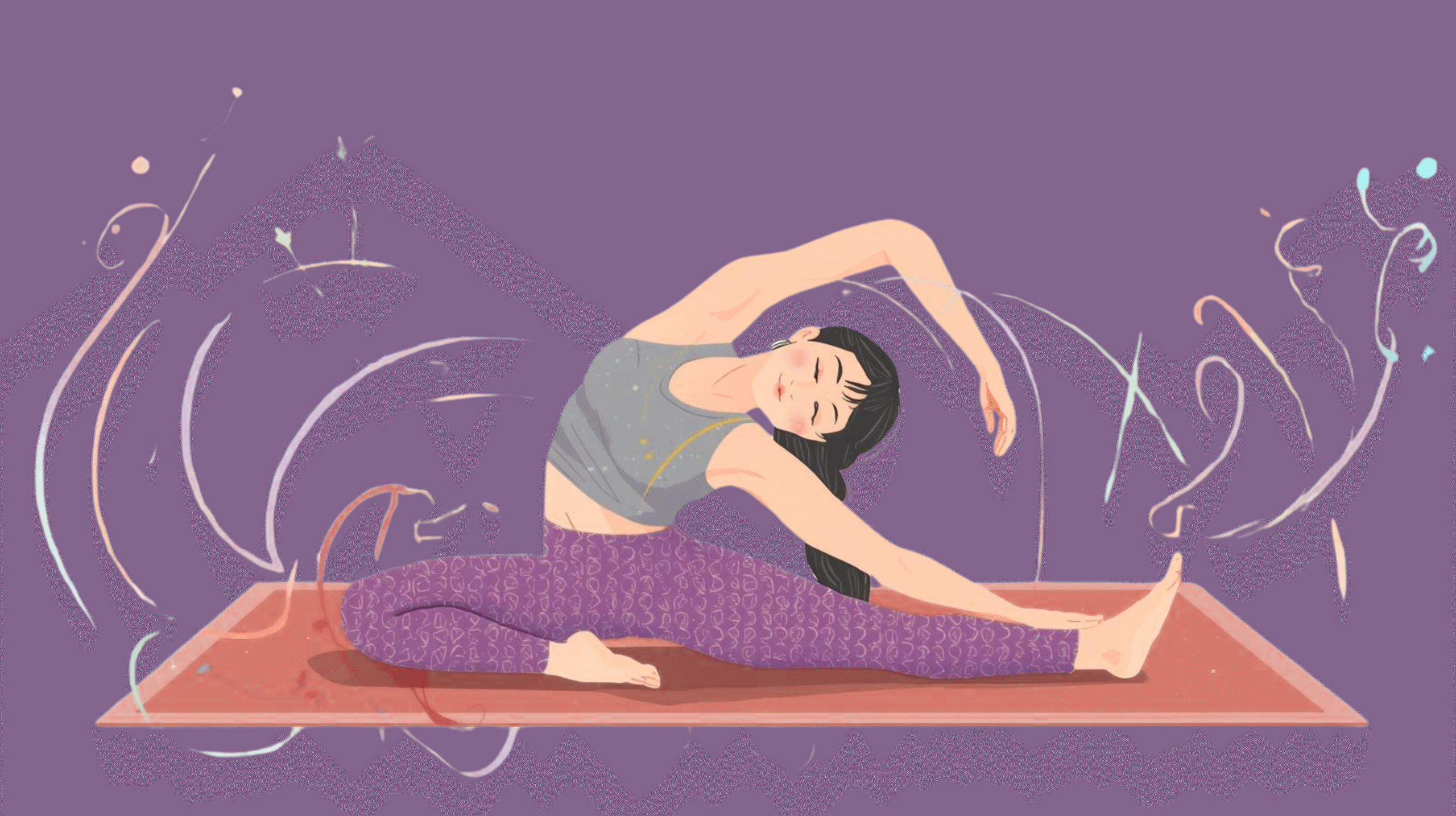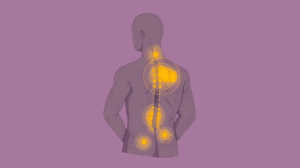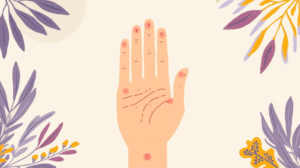The ability of muscles and joints to move smoothly across their whole range is known as flexibility. It enhances daily tasks, reduces the chance of injury , improves posture and balance, and makes physical exercise more comfortable for beginners.
Additionally, stretching also helps reduce tension while promoting relaxation. Beginners often have trouble with restricted joint mobility, bad posture, and tense muscles due to sitting. It may be more difficult to begin stretching safely and effectively due to ignorance, inconsistent practice, or fear of discomfort. Consistent flexibility exercise reduces stiffness, enhances joint mobility, improves posture, and minimizes the chance of injury. Additionally, it improves general body awareness and relaxation and increases performance in regular jobs or workouts.
Understanding Flexibility
The Distinction Between Mobility and Flexibility
Although they are linked, mobility and flexibility are not the same:
- Flexibility: It is the extent to which a muscle or soft tissue can stretch, either passively or actively, frequently on its own. For instance, how far your hamstring can be stretched.
- Mobility: It is the ability of a joint to actively move through its whole range of motion while maintaining control, strength, flexibility, joint health, and soft tissue health.
A person may have strong flexibility (being able to stretch far passively) but low mobility (being unable to actively employ that flexibility, for example, because of frailty, stiff joints, or poor control).

Types of flexibility: static, dynamic, active, and passive
Here are the key types:
1. Static Stretching
Stretching a muscle by moving into a position and holding it still for some time (often 15-60 seconds or more) without movement. Good for improving muscle length and post-activity cool-downs.
2. Dynamic Stretching
Involves moving joints and muscles through a range of motion, often in a controlled and repeated manner. Warms up the body, increases blood flow, and prepares muscles & joints for activity.
3. Active Flexibility (Active Stretching)
You use the strength of the opposing muscles to hold a limb in a stretched position (e.g. lifting a leg and holding it up without support). Builds both flexibility and strength.
4. Passive Flexibility (Assisted Stretching)
Stretch is aided by an external force like gravity, a strap, or another person.
Each has its time and place. Beginners especially can benefit from static stretches (after warm-up or post-exercise), dynamic movements (before activity), and gradually introducing active stretches when more confident.
How Flexibility Impacts Posture, Balance, and Daily Movements
- Posture: Tight muscles (chest, hip flexors, hamstrings) pull joints out of alignment; flexibility can relieve this. Flexibility in the spine can allow for better extension and reduce slouching.
- Balance: Ankle, hip, and core flexibility contribute to being able to react to perturbations. Reduced flexibility can limit balance responses.
- Daily movements: Tasks like reaching to pick something up, bending, standing from a chair, twisting, stepping up, etc. All require a certain range of motion. If flexibility is low, these are harder or done poorly.
Common Barriers to Flexibility for Beginners
Before starting, it helps to understand what may be holding you back.
- Muscle tightness from sedentary lifestyle: inactivity or sitting for long durations leads to shortened muscles (hip flexors, calves, hamstrings, chest), decreased circulation.
- Age-related changes: as we age, there is loss of elasticity in connective tissues, reduced water content, and sometimes joint degeneration. Flexibility tends to decline.
- Previous injuries or surgeries: scar tissue, inflammation, and immobilization periods reduce flexibility. Also fear or avoidance of certain movements.
- Lack of knowledge on proper stretching techniques: incorrect form, holding stretches too aggressively, using bouncing (ballistic), insufficient warm-up, or overstretching can lead to injury or discourage continuation.
Recognizing these helps in designing a safe, gradual plan.
Warm-Up and Preparation
One of the keys to safe and effective flexibility improvement is preparing the body.
Importance of Warming up Before Stretching
- Warm muscles and soft tissues are more pliable and responsive; cold muscles are stiffer and more prone to strain.
- Warming up raises body temperature and increases blood flow and circulation, which helps in stretching.
- Warm-up can reduce the risk of injury when stretching or doing dynamic movements.
Gentle Cardio for Increased Blood Flow
Examples:
- 5-10 minutes of brisk walking, marching in place, light jogging, or cycling.
- Jumping jacks or using a skipping rope lightly.
These increase heart rate and warm muscles.
Joint Rotations and Light Dynamic Movements
- Gentle joint mobilizations: neck circles, shoulder rolls, wrist circles, hip circles, and ankle circles.
- Light dynamic stretches: leg swings, walking lunges, and arm swings.
These help lubricate joints, activate muscles, and improve neural readiness.
Basic Flexibility Exercises for Beginners
Here are beginner-friendly stretches, organized by body region. Perform after warm-up, ideally when muscles are warm (post-activity or after gentle cardio).
Begin with 1-2 sets of each, holding static stretches for 15-30 seconds, repeating 2-3 times, breathing deeply, and easing into discomfort (not pain).
1. Neck and Shoulder Stretches: Side Tilt, Shoulder Rolls
- Neck side tilt: Sit or stand upright. Gently tilt your head to one side (ear toward shoulder), keeping the opposite shoulder down. Use a hand to gently assist, if comfortable. Hold; repeat on the other side.
- Shoulder rolls: Lift shoulders toward ears, and roll them back, down, and forward in smooth motion. Then reverse direction.
2. Upper Body Stretches: Chest Opener, Triceps Stretch
- Chest opener: Stand in a doorway, place hands and forearms on the door frame, and lean forward to stretch chest muscles. Or clasp hands behind back and lift arms slightly, opening the chest.
- Triceps stretch: Raise one arm overhead, bend the elbow so the hand touches the upper back, and use the opposite hand to gently press the elbow further.
3. Lower Body Stretches: Hamstring Stretch, Quad Stretch, Calf Stretch
- Hamstring stretch: Sit on the floor, one leg extended, the other bent, and reach toward the toes of the leg (keeping the spine straight). Or a lying hamstring stretch with a strap.
- Quad (quadriceps) stretch: Standing, hold one foot behind you, pulling the heel toward the glutes, keeping knees close together. Use a wall or support for balance if needed.
- Calf stretch: Facing a wall, place hands on the wall; step one foot back, heel down, and lean forward to stretch the calf. Or standing on a step, letting heels drop below the step.
4. Back and Spine Stretches: Cat-Cow, Seated Spinal Twist
- Cat-Cow (on hands and knees): Inhale, arch back (Cow), lift head/tailbone; exhale, round spine (Cat), tuck chin. Flow slowly.
- Seated spinal twist: Sit cross-legged or with legs extended; twist torso gently to one side, hand behind back, other arm across knee or outside of thigh to assist. Hold; repeat on the other side.
5. Hip and Glute Stretches: Butterfly Stretch, Pigeon Pose
- Butterfly stretch: Sit with soles of feet together and knees wide. Hold feet, and gently press knees toward the floor.
- Pigeon pose (modified for beginners): From downward dog, bring one knee forward, place lower leg under body, and extend back leg. If hips are tight, use a cushion under the hip. Gently lean forward to deepen the stretch.
Dynamic vs Static Stretching
Understanding the difference between these and when to use them is essential for safe and effective progress.
Benefits and Timing of Dynamic Stretches
Benefits:
- Increase blood flow, heart rate, and muscle temperature.
- Mimic movements you’ll use, helping prepare muscles and joints for activity.
- May improve performance in dynamic tasks (jumping, sprinting, agility) when used before activity.
When to use:
- Before workouts, sports, or any physical activity.
- When muscles are not cold but warmed via gentle movement or cardio.
- As part of a warm-up for 5-10 minutes.
Benefits and Timing of Static Stretches
Benefits:
- Improve flexibility and range of motion over time.
- Decrease muscle stiffness and promote relaxation after exercise.
- Useful for post-workout cool-down to help muscles return to resting length.
When to use:
- After workouts or physical activity, when muscles are warm.
- On rest days as part of a flexibility routine.
- Avoid long static stretching before high-power performance (e.g., sprinting, heavy lifting), because it may temporarily reduce strength/power.
When Beginners Should Use Each Type
For beginners:
- Warm up with dynamic stretching and joint rotations. This primes the body.
- Do static stretches post-activity or as a separate flexibility session.
- Keep static holds moderate (15-30 seconds initially). Over time, it can extend.
- Avoid forcing static stretches on cold muscles or expecting large change overnight.
Flexibility Routines for Home or Gym
Putting together simple, doable routines is key for consistency. Here are some sample routines and tips.
Simple 10-15 Minute Daily Routines
Routine example morning or evening: Begin your session with a gentle warm-up for about two minutes, such as marching in place, doing arm swings, or rolling your neck and shoulders to loosen up. From minutes two to five, move into dynamic stretches like leg swings, hip circles, and walking lunges to activate your muscles. Between five and ten minutes, focus on static stretches, including a hamstring stretch, quad stretch, chest opener, butterfly stretch, seated spinal twist, and calf stretch. From ten to fifteen minutes, add hip and glute stretches (such as pigeon pose or a modified version), back and spine stretches like cat-cow, and a gentle lower back stretch. Finish with deep breathing and relaxation. You can always adjust the stretches to focus on the muscles that feel the tightest.
Combining Stretches Into a Full-Body Sequence
A sample full-body sequence 2-3 times per week (on non-intense workout days or rest days):
- Warm-up (dynamic): ankle circles, hip circles, shoulder rolls, and leg swings.
- Static stretches for the lunging/major muscle groups: calves, hamstrings, quads, chest, and back.
- Active or passive assisted stretches when ready.
- Mobility drills: gentle lunges, twists, and reaching movements.
- Cool down: deep breathing, relax.
Tips for Gradual Progression and Avoiding Over-Stretching
- Progress gradually: increase hold time, depth of stretch, or frequency slowly over weeks.
- Listen to your body: stretch to mild discomfort, not pain.
- Use props if needed: straps, blocks, and cushions can help ease into stretches safely.
- Ensure good form: avoid rounding the back, locking joints, or twisting improperly.
- Incorporate rest: muscles recover during rest. If very sore, lighten/stretch more gently.
Incorporating Yoga and Pilates for Flexibility
Yoga and Pilates are excellent for beginners, as they combine stretching, mobility, strength, and breathing.
Beginner-Friendly Yoga Poses
- Downward Facing Dog: stretches hamstrings, calves, and shoulders.
- Child’s Pose: stretches spine, hips.
- Supine Hamstring Stretch (using strap): gentle stretch for hamstrings.
- Low Lunge / Anjaneyasana: stretches hip flexors.
- Seated Forward Fold: stretches spine, hamstrings.
Pilates Movements to Enhance Range of Motion
- Spine Roll-Up/Roll-Down: improves spinal mobility.
- Leg Circles: in supine position, helps hip mobility.
- Pilates Saw: stretches hamstrings, tapes spine.
- Bridging: opens up hip flexors, strengthens glutes, and stretches the front of thighs.
Breathing Techniques to Aid Stretching
- Use slow, deep inhalations and exhalations to relax the muscles during the stretch.
- Exhale as you move into a stretch (gently); inhale when releasing or preparing.
- Hold the stretch while breathing steadily; avoid holding your breath.
Lifestyle Tips to Improve Flexibility
Stretching routines are only one part; lifestyle supports or undermines progress.
- Staying hydrated for muscle elasticity: dehydration can reduce tissue elasticity and increase stiffness.
- Balanced diet for joint and muscle health: sufficient protein, vitamins (C, D), minerals (magnesium, calcium), and antioxidants to support connective tissue repair.
- Consistency and progressive overload in stretching: regular practice (multiple times per week) is needed; gradually increase duration or depth.
- Avoid prolonged sitting and incorporate movement breaks: stand up and stretch every hour if you sit long, and walk and move joints.
- Adequate rest/sleep: growth, repair, and recovery happen during sleep; lack of sleep may increase muscle soreness and reduce recovery.
- Listen to your body: pain and sharp sensations are warning signs; modify or back off if needed.
Safety Tips for Beginners
For beginners, safety should always come before depth or intensity. Always warm up before stretching to prepare muscles and joints and reduce injury risk. Stretch slowly and in a controlled manner, stopping at mild discomfort—not pain. Maintain steady breathing throughout each stretch, as holding your breath can increase muscle tension. Use props like straps, cushions, walls, or chairs to support proper alignment and avoid strain. If you have a history of injury, joint pain, or medical conditions, modify stretches and consider professional guidance. Consistency matters more than intensity when starting out.
Common Stretching Mistakes
Many beginners unknowingly slow their progress through common errors. Stretching cold muscles without a warm-up increases the risk of strains. Bouncing during stretches (ballistic stretching) can cause microtears in muscles and connective tissue. Overstretching or forcing range of motion beyond comfort may lead to injury instead of improvement. Skipping dynamic movements before workouts or relying only on static stretches can reduce performance. Doing too much too soon—long holds, excessive volume, or daily intense sessions can also cause soreness and burnout.
Benefits Beyond Flexibility (Pain Relief, Injury Prevention)
Regular stretching offers benefits far beyond improved range of motion. It helps reduce muscle stiffness and joint discomfort, particularly in the neck, back, hips, and shoulders. Improved flexibility and mobility support better posture and balance, lowering the risk of falls and overuse injuries. Stretching also enhances circulation, promotes relaxation, and reduces stress-related muscle tension. When combined with strength and movement breaks, consistent stretching routines can significantly improve daily comfort, exercise performance, and long-term musculoskeletal health.
Creating a Personalized Flexibility Routine
Design your routine around your goals, current flexibility, and limitations.
Assessing Current Flexibility and Goals
- Test some basic movements: can you touch your toes? Do you have trouble squatting? How far can you twist your torso? Are certain muscles tight (hamstrings, hip flexors, chest)?
- Note what your goals are: improve walking, reduce back pain, enhance performance in some sport, better posture, etc.
Combining Warm-Up, Stretching, and Mobility Exercises
- Base your routine around those problem areas, but ensure balance: stretch both front/back and left/right.
- Use dynamic stretches in warm-ups; use static stretches either at the end of a workout or in separate flexibility-only sessions.
- Add mobility drills (joint rotations, active stretches).
Tracking Progress and Gradually Increasing Intensity
- Keep a log of which stretches, how long they were held, how many times per week, and how you felt.
- Retest every few weeks (e.g., see if you can reach a bit further, squat deeper, or twist more comfortably).
- Gradually increase stretch duration, depth, or number of repetitions as tolerated.
Adjusting Routine Based on Age, Fitness Level, and Limitations
- Older individuals or those with stiff joints: start gently, with shorter holds and more frequent but lighter sessions.
- If specific injuries or surgeries: possibly consult a professional; modify stretches to avoid aggravating injured areas.
- Use props: straps, pillows, walls, and chairs to assist.
Conclusion
Flexibility is not a luxury; it is an essential component of mobility, daily function, injury avoidance, posture, and overall health. For novices, the key is to begin easy, warm up properly, employ both dynamic and static stretching appropriately, and keep stretching consistent. With time, patience, and careful advancement, you’ll notice an increase in your range of motion, less stiffness, better posture, and more freedom of movement. Respect your body’s signals and move safely.
Looking for more health and wellness solutions ?
Don’t miss these related guides:-
Frequently Asked Questions:
1. What are the best flexibility exercises for beginners?
Best flexibility exercises target large muscle groups and joints that tend to get tight. Good starting points include hamstring stretches, quad stretches, calf stretches, chest openers, hip flexor stretches, gentle spinal twists, and neck and shoulder stretches. Also dynamic warm-up moves like leg swings and arm circles.
2. How often should beginners stretch to improve flexibility?
A good guideline is
- Light stretching or mobility work daily (or almost daily) for a few minutes.
- More formal, longer static stretch sessions 2-4 times per week.
- Warm-ups before activity, cool-downs or dedicated flexibility sessions on rest or light days.
Consistency over weeks (at least 4-8 weeks) is when many people begin to notice clear improvements.
3. What is the difference between static and dynamic stretching?
Static stretching involves holding a position to stretch muscles (without movement). Good for increasing flexibility over time and cooling down.
- Dynamic stretching involves moving muscles and joints through motion in a controlled way. Good for warming up, preparing for activity, and increasing blood flow.
Also, static before activity (especially long holds) may reduce immediate power; dynamic is better pre-activity. Static is better post-activity or during flexibility routines.
4. Can stretching prevent injuries for beginners?
Stretching helps reduce the risk of injuries through multiple pathways: by improving flexibility (so muscles and tendons are less tight), improving joint range of motion so movements are smoother, improving posture so alignment is better, reducing compensatory patterns, and maintaining better tissue health. It doesn’t guarantee no injury, but literature supports that flexibility work is one component of injury prevention.
5. How long should each stretch be held for optimal results?
For beginners, static stretches held for 15-30 seconds are a good starting point, repeated 2-3 times per muscle group. As flexibility improves, longer holds (up to 60 seconds or more) may yield additional benefits. But very long holds before activity can impair strength/power temporarily.
References
- “Stretching: The new mobility protection” – Harvard Health Publishing. https://www.health.harvard.edu/staying-healthy/stretching-the-new-mobility-protection Harvard Health
- “Understanding the differences between mobility and flexibility” – Medical News Today. https://www.medicalnewstoday.com/articles/mobility-vs-flexibility Medical News Today
- “The importance of stretching” – Harvard Health Publishing. https://www.health.harvard.edu/staying-healthy/the-importance-of-stretching Harvard Health
- “Flexibility versus mobility: Why you should know the difference”
https://journals.lww.com/acsm-healthfitness/fulltext/2023/11000/shareable_resource__flexibility_versus_mobility_.3.aspx - “Improvements in Flexibility Depend on Stretching Duration” https://pmc.ncbi.nlm.nih.gov/articles/PMC10124737/
- “The Influence of Resistance Training on Joint Flexibility in Healthy Adults” https://pmc.ncbi.nlm.nih.gov/articles/PMC11841725/
- “Time to Move From Mandatory Stretching? We Need to Differentiate Flexibility and Mobility.” https://pmc.ncbi.nlm.nih.gov/articles/PMC8340604/
- “Age-related mobility loss is joint-specific: an analysis from 2674 people aged 20-96 years.” https://pmc.ncbi.nlm.nih.gov/articles/PMC3824991/























